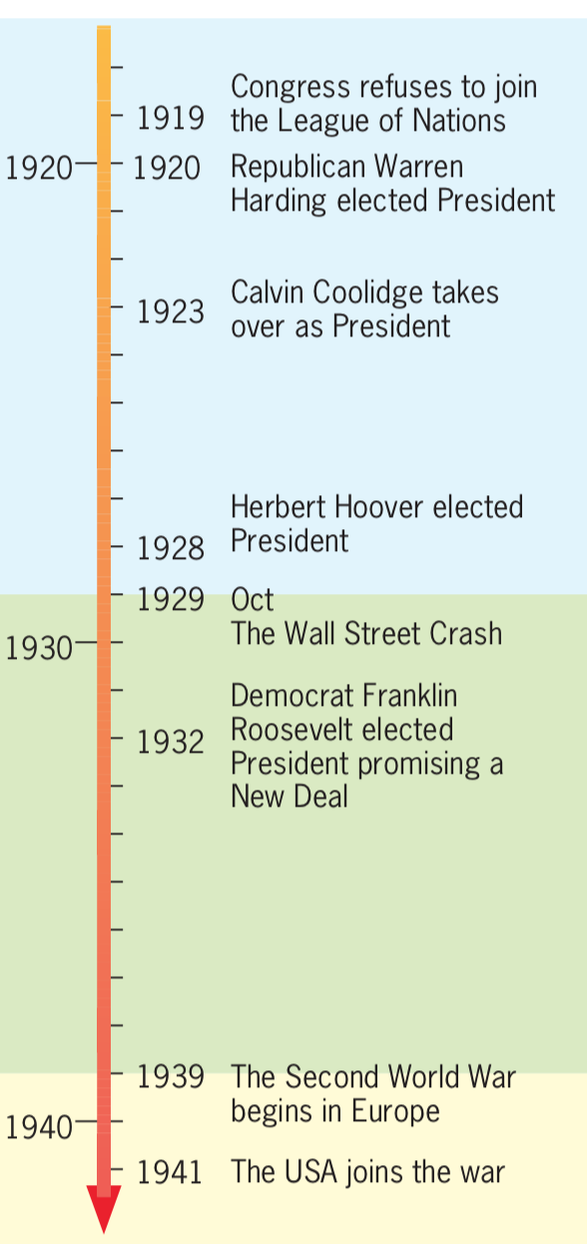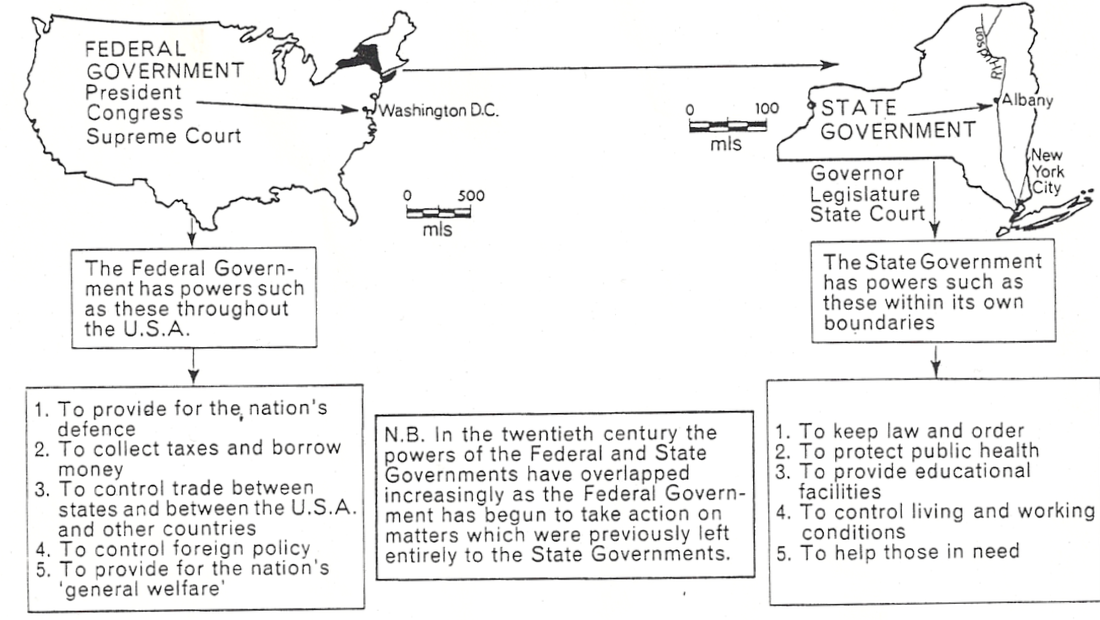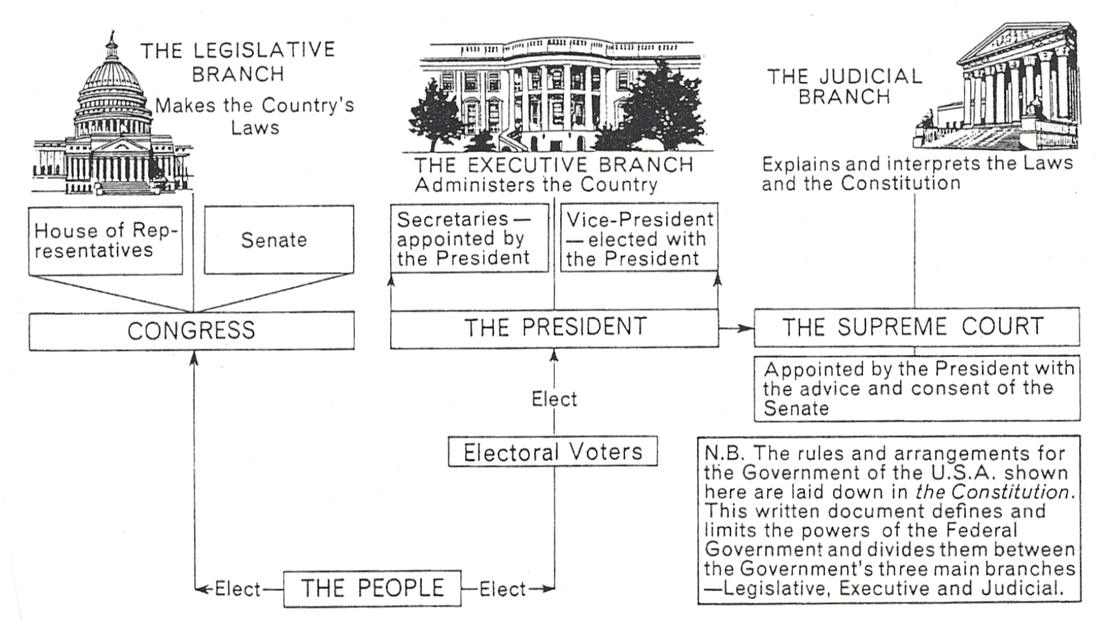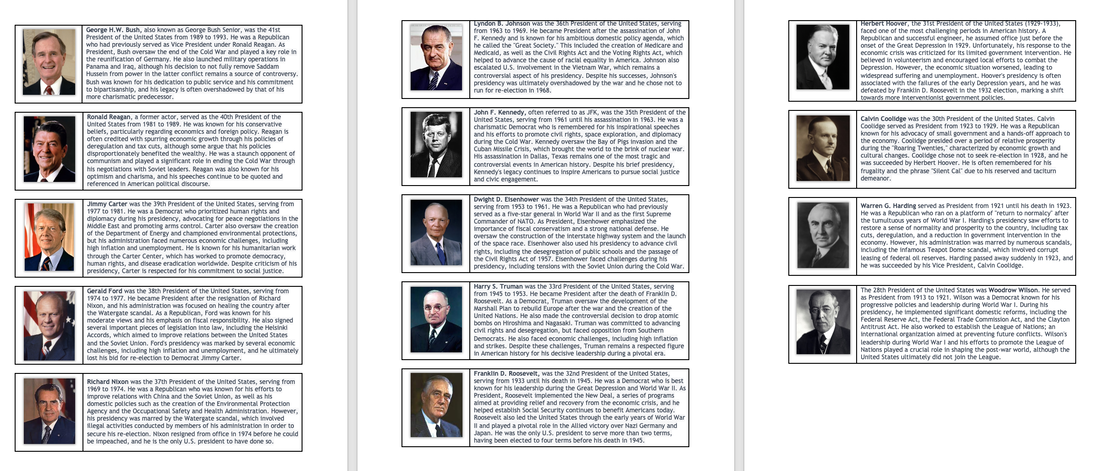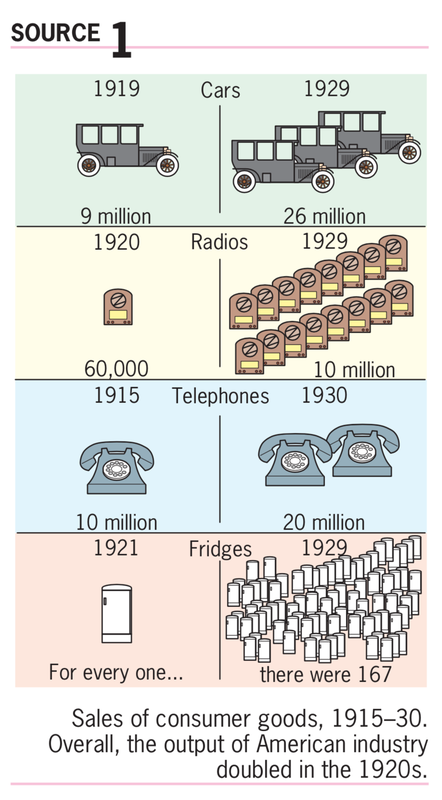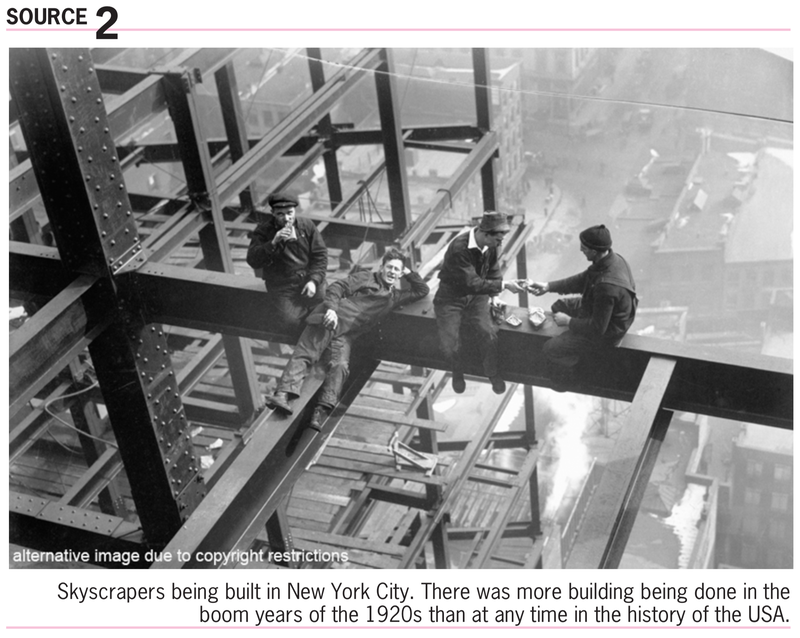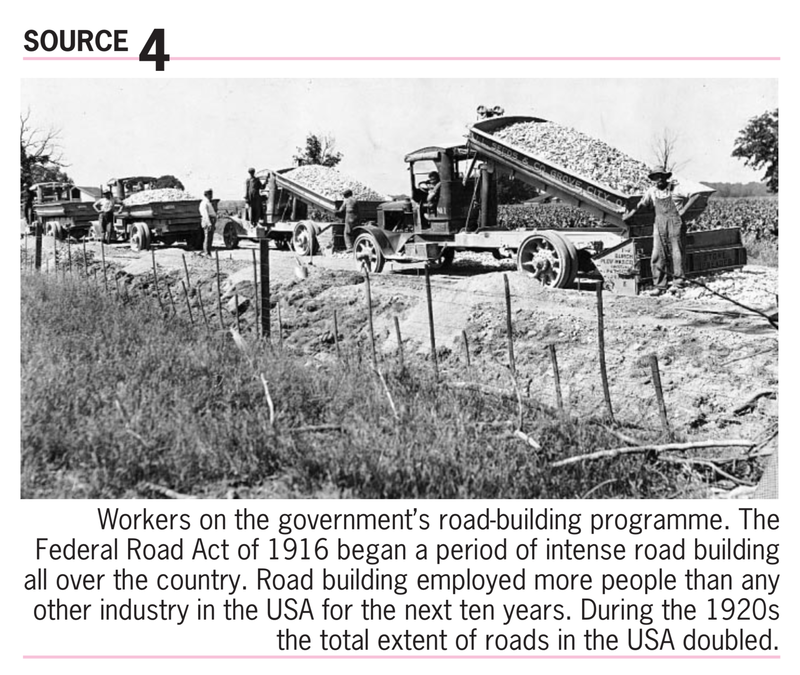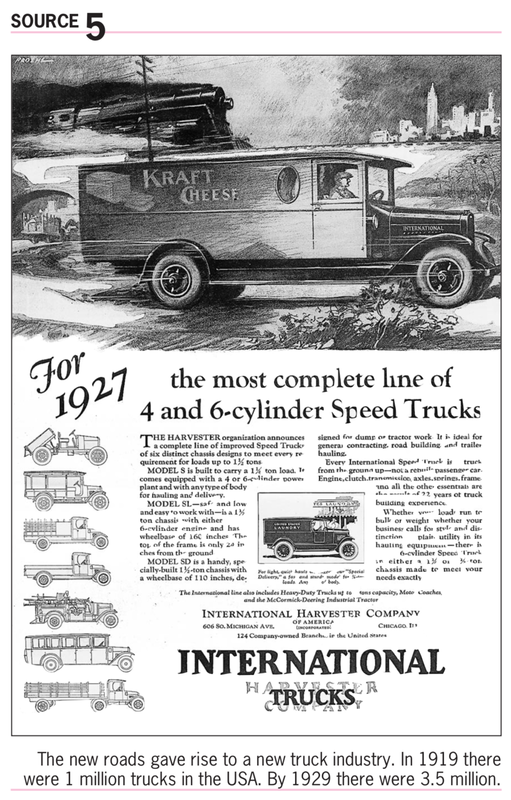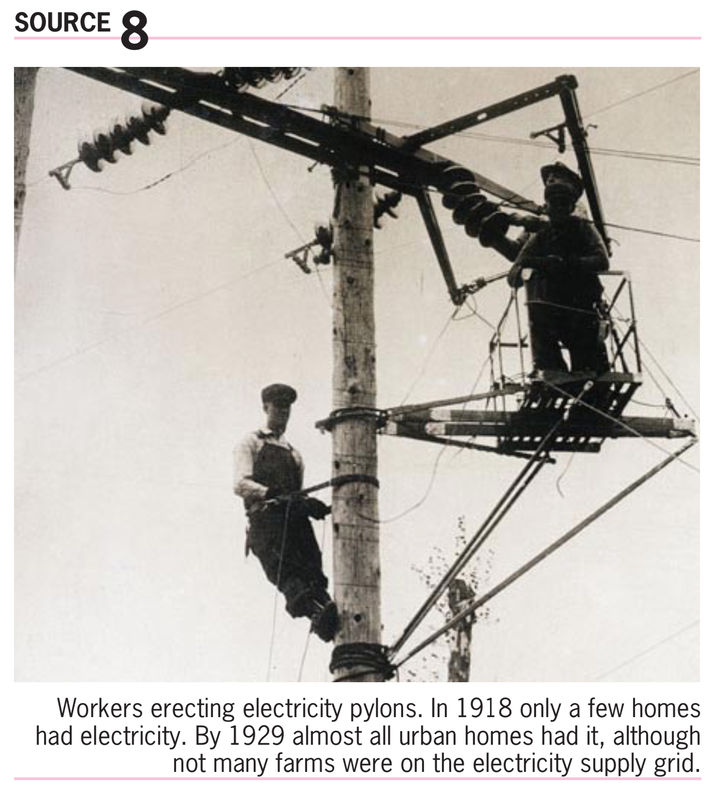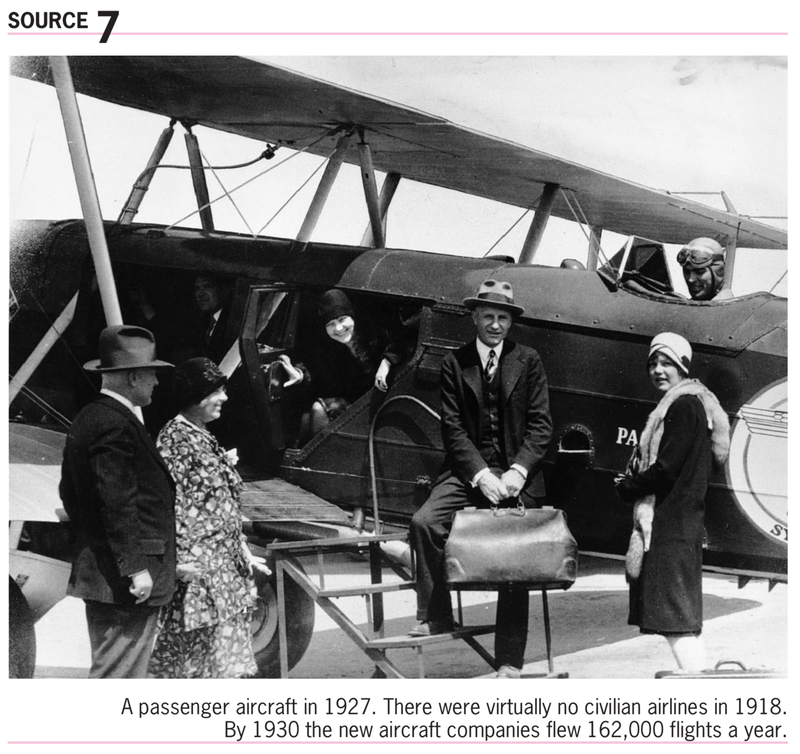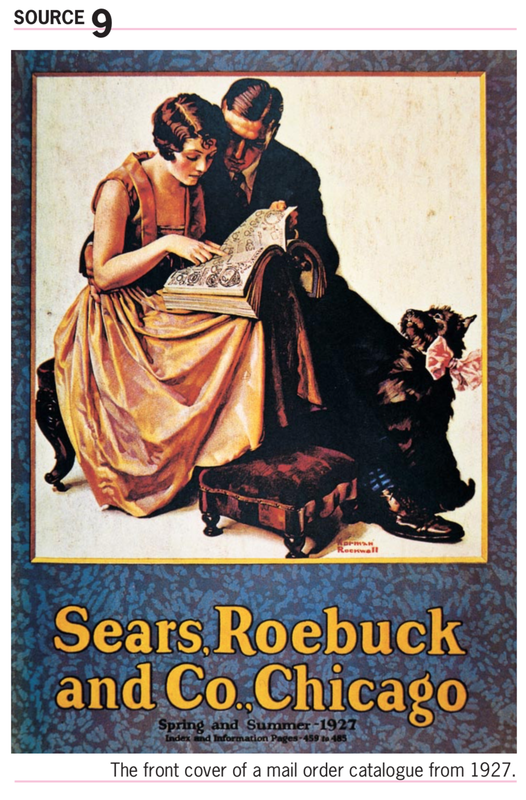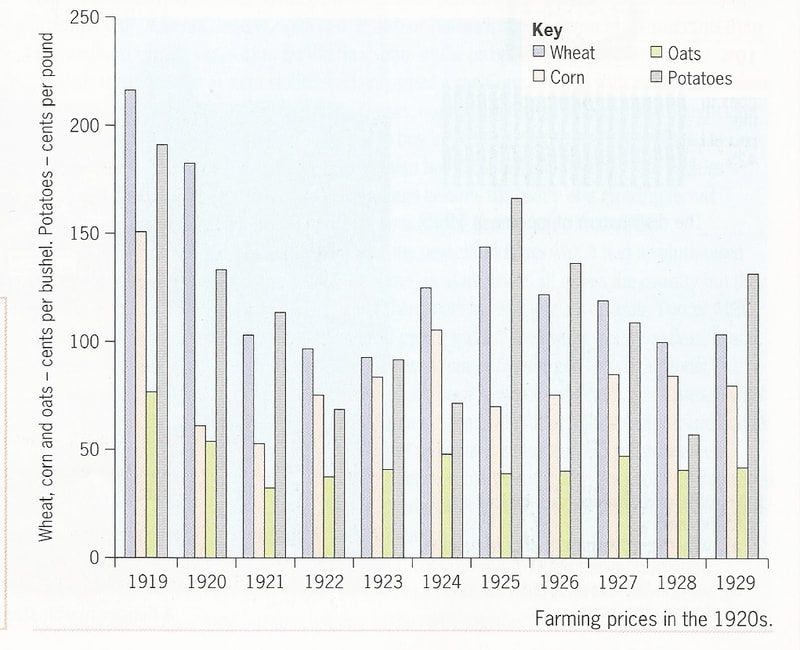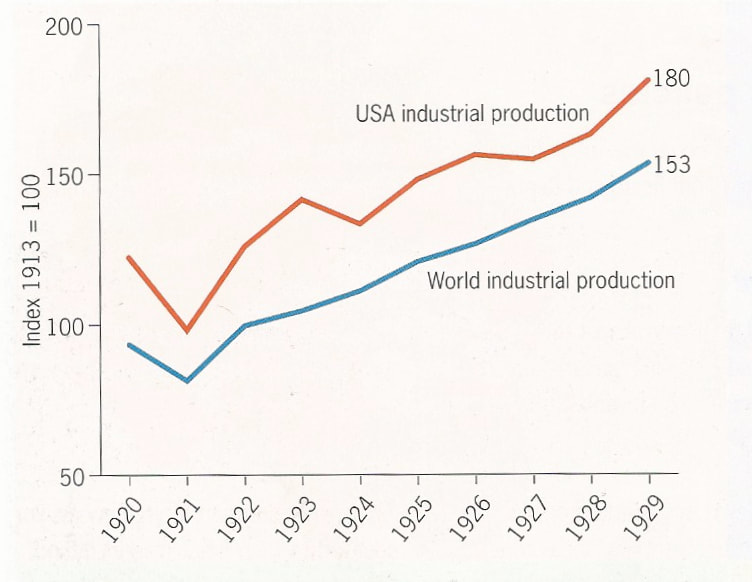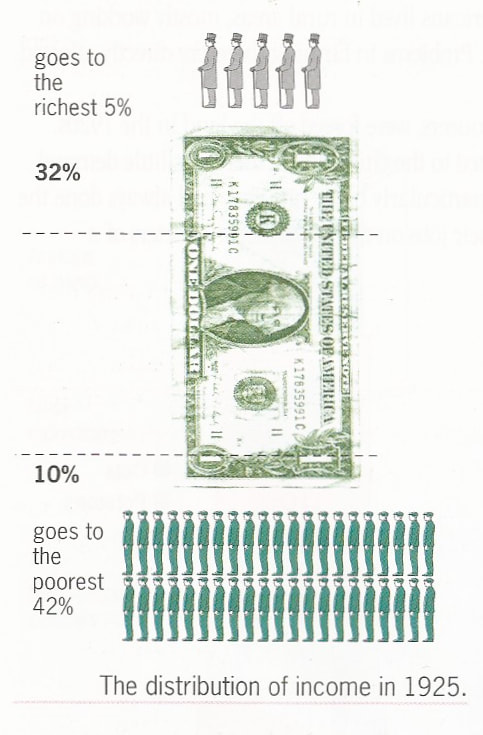Lesson 1 - Why was there an economic boom in the 1920s and who benefited?
The US political system
|
The USA is the world's oldest democracy. It has the world's oldest written constitution. (Britain's is older but is not all in writing.) As a republic only the Swiss republic is of longer standing and its head of government was always elected by the people. By the 1820s, property qualifications for voting had been dropped in all states and the principle of 'one man, one vote' for white men had been accepted and that included presidential elections, despite the Electoral College system. (African Americans, most of whom were still slaves, did not have the vote and neither did Native Americans. American women - as in most European countries, not Switzerland - had to wait until the early 20th century.) By contrast the French and British had to wait until the 1870s and 1880s until they got the right of 'one man, one vote' in genuinely multiparty parliamentary elections.
|
Because of its federal constitution, the USA - like Switzerland - has an extraordinary number of elections. Americans get to vote for representatives at the federal, state and local government levels. If you were of voting age and lived in Los Angeles, here are the people you could vote for: the governor of California, a member of the city council, a member of the House of Representatives, the county commissioner, a member of the Californian legislative assembly, a senator, the president of the USA, a member of the Californian Senate.
Legislation refers to laws. To legislate is to make laws. The legislative branch of the US federal government is Congress. Congress is divided into the Senate, in which the states are represented, and the House of Representatives, in which the people are represented. Again, this is very similar to Switzerland. The states are represented equally in the Senate (regardless of their size or population), each state sending two senators. Senators are elected for six years, with one third being elected every two years. By contrast, members of congress are elected to the House of Representatives for only two years. Thus, senators are less sensitive to the ups and downs of public opinion than House Representatives, who continuously have to worry about getting re-elected. Senators are seen as senior statesmen who advise the president. Their approval is needed when the president makes important appointments, such as secretaries of state (ministers who head government departments or ministries), federal judges and ambassadors. In keeping with the constitutional principle of "checks and balances", the Senate's ratification (approval) is also needed before treaties signed by the president can come into effect. All legislation (laws in-the-making, referred to as 'bills') requires the approval-usually by a simple 50 per cent majority-of both the House and the Senate. Finally, the president's signature is required before a bill can become law.
Legislation refers to laws. To legislate is to make laws. The legislative branch of the US federal government is Congress. Congress is divided into the Senate, in which the states are represented, and the House of Representatives, in which the people are represented. Again, this is very similar to Switzerland. The states are represented equally in the Senate (regardless of their size or population), each state sending two senators. Senators are elected for six years, with one third being elected every two years. By contrast, members of congress are elected to the House of Representatives for only two years. Thus, senators are less sensitive to the ups and downs of public opinion than House Representatives, who continuously have to worry about getting re-elected. Senators are seen as senior statesmen who advise the president. Their approval is needed when the president makes important appointments, such as secretaries of state (ministers who head government departments or ministries), federal judges and ambassadors. In keeping with the constitutional principle of "checks and balances", the Senate's ratification (approval) is also needed before treaties signed by the president can come into effect. All legislation (laws in-the-making, referred to as 'bills') requires the approval-usually by a simple 50 per cent majority-of both the House and the Senate. Finally, the president's signature is required before a bill can become law.
|
Congressional elections take place at the same time as presidential ones. Election Day is early in November. The principle of the separation of powers (between the legislative, the executive and the judicial branches of the government) in the Constitution ensures that the election and powers of the president remain quite separate from those of Congress (the legislative branch).
Although it does not seem logical, it is perfectly possible for voters to return a Democratic majority to Congress while voting in a Republican president. This kind of split vote happened quite often and gives the American political system its unique complexity. A successful president has to be skilful in managing Congress. |
The situation contrasts with most parliamentary systems in the world, where the party with the biggest vote in a parliamentary election automatically gets to nominate the head of government (usually the leader of that party). In this case, there is no separate election for the head of government, who is a member of parliament and can rely on a majority there.
The Supreme Court heads the judicial branch of government (the law courts). Its job is to determine the constitutionality of laws. In the American system of government, the judiciary is entirely separate from the executive branch, which is headed by the president. Although Supreme Court judges are appointed by the president, they are appointed for life, so cannot be removed. An independent judiciary is an essential feature of truly democratic states. It is only possible to have a genuine opposition to the government if people are not afraid to speak up. This will not be possible if judges can be influenced by the government.
The Supreme Court heads the judicial branch of government (the law courts). Its job is to determine the constitutionality of laws. In the American system of government, the judiciary is entirely separate from the executive branch, which is headed by the president. Although Supreme Court judges are appointed by the president, they are appointed for life, so cannot be removed. An independent judiciary is an essential feature of truly democratic states. It is only possible to have a genuine opposition to the government if people are not afraid to speak up. This will not be possible if judges can be influenced by the government.
|
Activity 1 - The US Political System and Presidents.
1. If in an oral you were asked to explain how the US political system works, how would you do it? Write a paragraph of explanation - with diagrams if that helps - but make sure to include all the words in bold. 2. 'Guess Who' the Presidents version. Just as we played with the Enlightenment philosophers and scientists, this time we play with the US Presidents of the 'short twentieth century' . Download cards here. |
What was the 1920s boom?
The 1920s, also known as the "Roaring Twenties," was a period of significant economic growth and prosperity in the United States. (Textbook 184-5) The following account of the 1920s is taken from the Nobel Prize winning economist Robert L. Shiller. The height of the Second Industrial Revolution saw technological innovation power important economic and cultural changes. Importantly, just as newspapers helped generate a sense of British nationality during the first industrial revolution in Britain, so the radio brought Americans together for the very first time.
The 1920s, also known as the "Roaring Twenties," was a period of significant economic growth and prosperity in the United States. (Textbook 184-5) The following account of the 1920s is taken from the Nobel Prize winning economist Robert L. Shiller. The height of the Second Industrial Revolution saw technological innovation power important economic and cultural changes. Importantly, just as newspapers helped generate a sense of British nationality during the first industrial revolution in Britain, so the radio brought Americans together for the very first time.
The 1920s were a time of rapid economic growth and, in particular, of the widespread dissemination of some technological innovations that had formerly- been available only to the wealthy. The automobile came into common use at roughly this time. In 1914 there had been only 1.7 million automobiles registered in the United States, but by 1920 there were 8.1 million and by 1929 there were 23.1 million. The automobile brought with it a new sense of freedom and possibility, and a widespread awareness that these personal values could h attained by new technology.
The 1920s were also the time when the electrification of the country was extended beyond the major cities which had already been electrified. By 1929, twenty million U.S. homes were wired. Kerosene lamps were out; electric light bulbs were in. By 1929, nearly half of all wired homes had vacuum cleaners and a third had washing machines. Moreover, the 1920s saw the expansion of radiobroadcasting and the development of radio as a mature national entertainment medium. In 1920 there were only three radio stations in the entire United States; by 1923 there were over five hundred... The National Broadcasting Company formed the first national network in 1926, and regular shows created a sense of national culture previously unknown. Sound also invaded our movies. Lee De Forest invented the sound-on-film system in 1923, and talkies had completely displaced silent movies by the end of the decade. Because these innovations had such an impact on everyday lives, affecting people in their homes and in their hours of leisure, the 1920s were a time when massive technological progress was unusually apparent to even the most casual observer.
There were, at the time of the 1920s stock market boom, many clear statements proclaiming a new era for the economy. For example, as early as 1925 we hear, "There is nothing now to be foreseen which can prevent the United States from enjoying an era of business prosperity which is entirely without equal in the pages of trade history."
Robert L. Shiller - Irrational Exuberance (2000)
Why was there a boom?
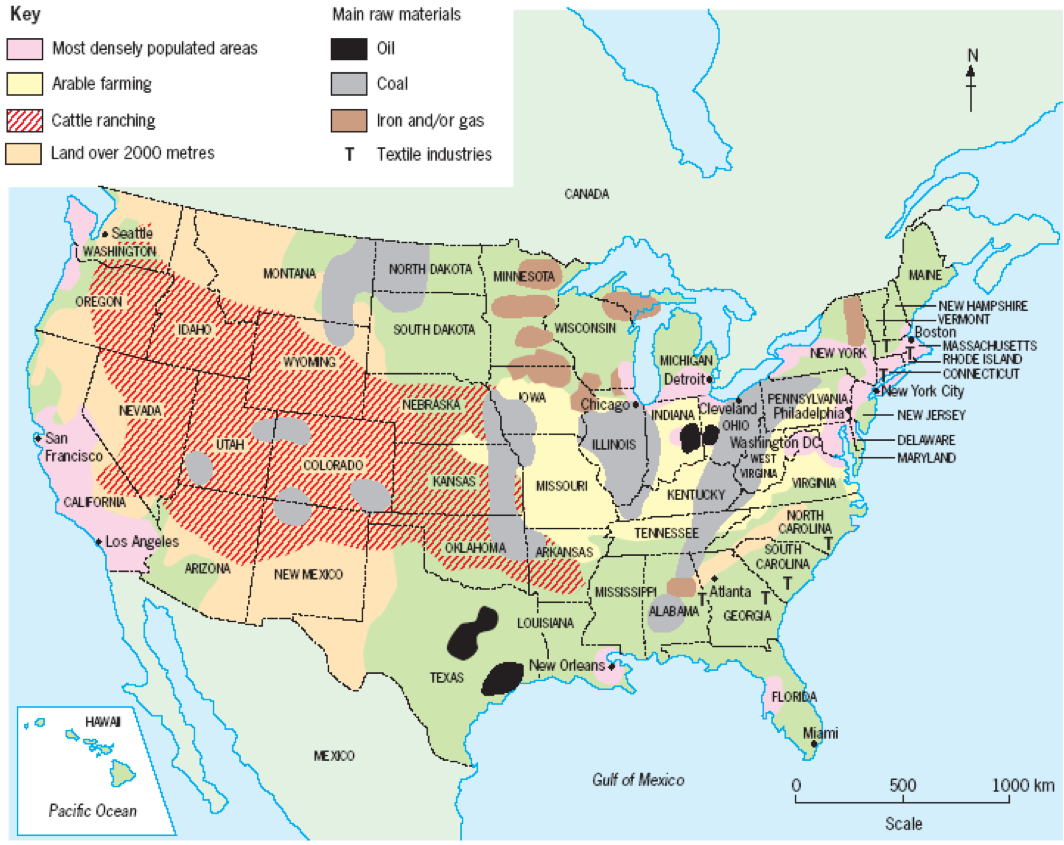
|
Textbook 186-90 The map below gives shows you the main centres of population and key natural resources in 1900. This provided the USA - like the UK previously - with the basis of their economic potential. The First World War provided a significant boost to the exports and the demand for US goods. The party in power in the 1920s were the Republicans and their policies also aided the unrestrained (but ultimately unrealistic) boom of the 1920s. Below you'll see the development of new industries and technological developments which taken together marked the high point of the second industrial revolution. |
There were several factors that contributed to this boom, including:
- The end of World War I: The war had disrupted many industries, but with the armistice in 1918, businesses were able to resume normal operations. This led to an increase in production and a corresponding boost in economic activity.
- Technological advancements: Many new technologies, such as automobiles, radios, and telephones, were developed during this time. New production methods were also important (Fordism and Taylorism below) This led to the creation of new industries and the expansion of existing ones, which in turn led to more jobs and higher wages.
- Government policies: The government pursued a number of policies that helped to stimulate the economy, such as the Fordney-McCumber Tariff Act of 1922 and the Revenue Act of 1924. These policies protected American businesses and farmers from foreign competition, and also lowered taxes on the wealthy, which gave them more money to invest in the economy.
- The rise of consumer culture: As wages increased and prices fell, more Americans were able to afford to buy goods and services that they had previously been unable to. This led to a rise in consumer spending, which helped to drive economic growth.
- Economic speculation: Stock prices soared in the late 1920s, as investors, including regular people, rushed to buy shares in newly-public companies, with the belief that they could make a quick return.
Below is the film we watched in the lesson that outlines the main features of Fordism and Taylorism, the main innovations in the US industrial economy in the 1920s. The short extract from Charlie Chaplin's Modern Times is a contemporary critique of Fordism.
Country versus town - Why did agriculture not share in the prosperity?
- Overproduction: The end of World War I led to an increase in demand for food, as soldiers returned home and countries that had been involved in the war resumed normal economic activity. However, American farmers responded by increasing their production, which led to a glut of agricultural products on the market. This caused prices to fall, and many farmers found themselves unable to make a profit.
- Competition from other countries: American farmers faced increasing competition from other countries, such as Canada and Australia, which had been able to expand their agricultural production during the war while the United States was occupied with other things.
- Technological advancements: Advances in technology, such as tractors and other farm machinery, allowed farmers to produce more food with less labor, which further increased production and put downward pressure on prices.
- Lack of government support: The government policies of the time were focused on protecting American businesses and industries, but did little to support farmers.
- Poor weather conditions: The 1920s was marked by a series of natural disasters, such as droughts, floods, and storms, which further hampered agricultural production.
Activity 2 - The Economic Boom
1. Using the sources and your textbook, describe the main features of the 1920s economic boom.
2. Explain why there was a boom in the 1920s.
3. The textbook doesn't refer to the second industrial revolution, Fordism and Taylorism, so explain them here. Make a good job of this because of all the things in this section this is what we are most likely to test you on.
4. Finally the farmers. As we will see next lesson, not everyone benefitted from the boom. Using your textbook and the sources above explain why America's rural community did not share in the wealth of the growing urban centres.
1. Using the sources and your textbook, describe the main features of the 1920s economic boom.
2. Explain why there was a boom in the 1920s.
3. The textbook doesn't refer to the second industrial revolution, Fordism and Taylorism, so explain them here. Make a good job of this because of all the things in this section this is what we are most likely to test you on.
4. Finally the farmers. As we will see next lesson, not everyone benefitted from the boom. Using your textbook and the sources above explain why America's rural community did not share in the wealth of the growing urban centres.
Extension and extras
As IB students know, there is a section of the Paper 2 exam which is concerned with industrialisation. 7. Origins, development and impact of industrialization (1750–2005). Students are encouraged to see the links between different phases of the industrial revolution as it rolled out across the world. We have already looked at Britain, Switzerland, Japan and will also look at the Five Year Plans in Stalin's Russia. The IB exam paper often expects students to compare and contrast different regions of the world and the USA is very much in a different region to the UK. Comparing the first (British) industrial revolution to the second (American) is therefore a useful and, I think, interesting activity. In addition, as both these topics are *Matu topics that are more likely to appear in Matu exams, for revision purposes this extra reflection also makes perfect sense. Consider this activity you did last year. How does what you learnt in this unit impact on your approach to the earlier activity?
As IB students know, there is a section of the Paper 2 exam which is concerned with industrialisation. 7. Origins, development and impact of industrialization (1750–2005). Students are encouraged to see the links between different phases of the industrial revolution as it rolled out across the world. We have already looked at Britain, Switzerland, Japan and will also look at the Five Year Plans in Stalin's Russia. The IB exam paper often expects students to compare and contrast different regions of the world and the USA is very much in a different region to the UK. Comparing the first (British) industrial revolution to the second (American) is therefore a useful and, I think, interesting activity. In addition, as both these topics are *Matu topics that are more likely to appear in Matu exams, for revision purposes this extra reflection also makes perfect sense. Consider this activity you did last year. How does what you learnt in this unit impact on your approach to the earlier activity?
|
|
|

